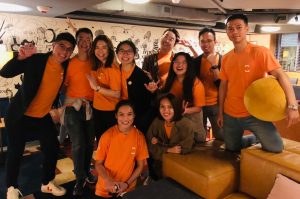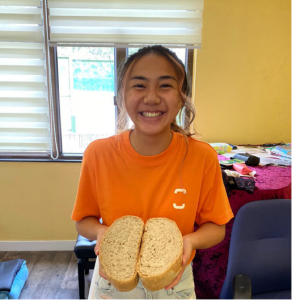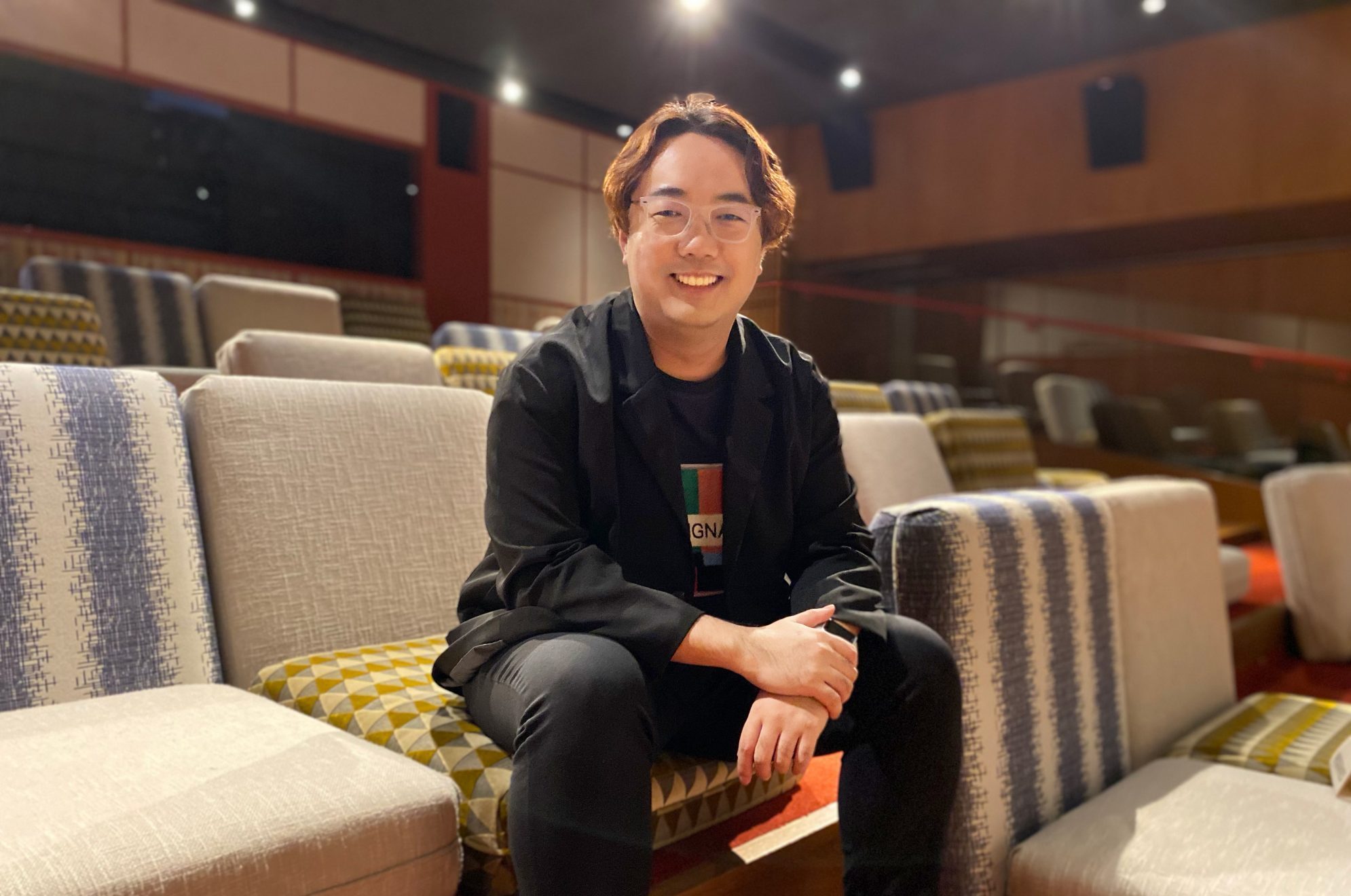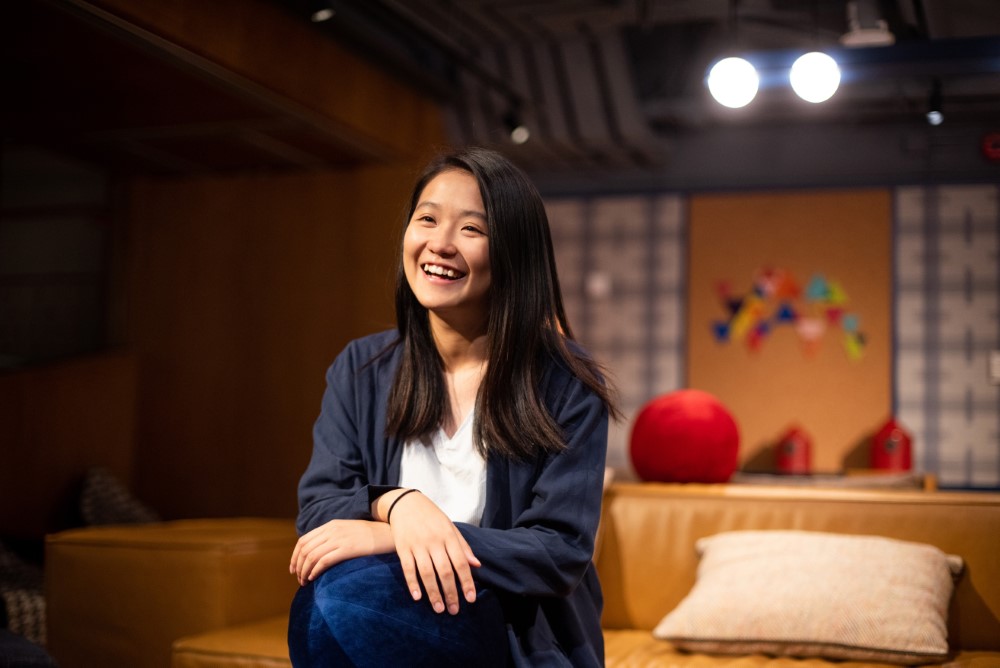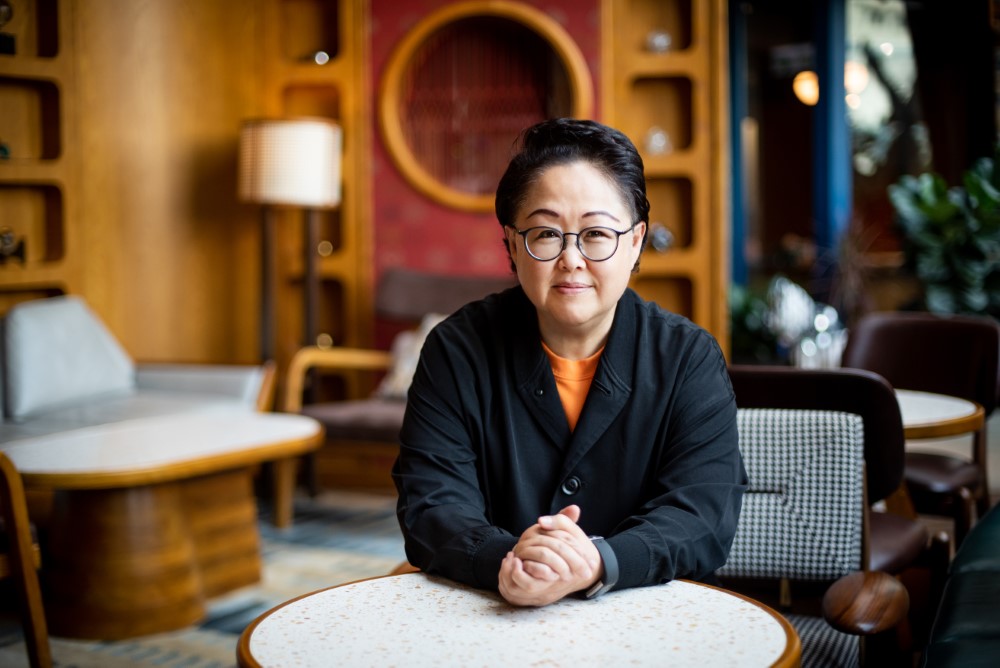Looking back with Alexa Li
Alexa Li, who had fought the good fight for four years with Good Lab, transitioned into her new job with ZeShan Foundation in June this year. We caught up with her and talked about the days as a fresh recruit into Design Thinking, the ups and downs along the way, and she shares some insights into the Design Thinking process after four years of being in the front line of several of our major Design Thinking-based consultancy projects.
Good Lab: Introduce yourself Alexa!
Alexa Li: Uh… (Laughs – we all miss Alexa’s laugh) I’m Alexa. Originally, an Economics Major for my undergrad. Then I went into a Master’s in Development Management at the London School of Economics after I was inspired by the story of Muhammed Yunus in a microfinance course. I came back to Hong Kong in 2015 and my first job was with a children’s literacy NGO. Then I started at Good Lab!
Good Lab: You joined Good Lab in 2017, what questions did you have coming in?
Alexa Li: Before I joined, I worked in a local NGO. We spent lots of time applying for funding, which usually just lasted a year, so one of the big questions I had was ‘How do we sustain changes and impact in the long term?’ I heard about this term social innovation from Good Lab, and wanted to know more about it. I also knew I had to do design thinking stuff, but I really didn’t understand what it was about. I thought it was some complicated framework. I was, am, still young, and always up for a challenge!
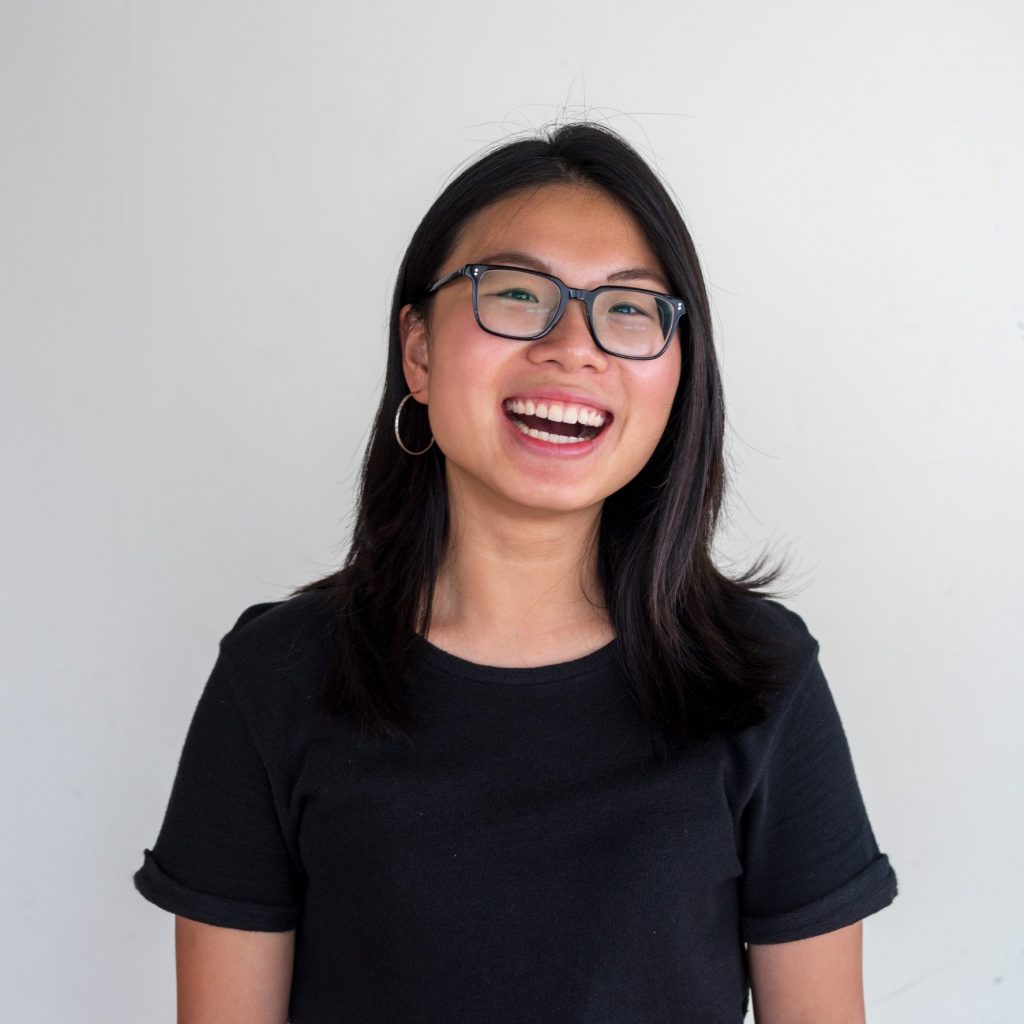
Good Lab: Don’t worry, back in 2017 I think we were all trying to understand design thinking in theory and how to apply it in practice! We were in the same boat! So, as you started with Good Lab, what was your greatest challenge?
Alexa: My biggest challenge was doing something I had never done before. In a very short time, I was leading a project supporting young people to create projects to benefit their community in Tuen Mun using Design Thinking as a framework. In the first 2 cohorts, I was very nervous. People were asking me questions, and I was afraid of giving them the wrong answer. It got better as I better realised my role not as the ‘knower of all things’ but as a facilitator, who is about helping them ask the right questions.
Good Lab: Interesting, tell me more about that difference between a teacher/expert and a facilitator/coach.
Alexa: I think in a traditional Hong Kong setting, it can be very top down and people running the programme are expected to be the teacher having all the answers. In reality, we can’t know everything in every context and things change. So it is all about teaching the young people how to find out the answers through asking questions, research and not relying on the ‘answers’ of experts. Once this became my foundation and natural instinct, I got more confident as I didn’t need to know all the answers, I just had to help them ask the right questions!
Good Lab: You’re definitely not a fresh recruit now. You’ve been part of at least 4 design thinking consultancy projects, most of which lasted a full year or more, and numerous trainings. What are the greatest challenges in applying design thinking that you’ve seen on the field?

Alexa: I do have a few to share!
When we first learn design thinking, we tend to focus on the framework, and the tools like an empathy map or post-it notes. We’re always in a rush in workshops, so the temptation is ‘fill out the form’ and then magically we’ll get the answer. It’s not like that. Don’t focus on the tools. Focus on leaving the time to ask the right questions. Design Thinking is inquiry driven. To do it well, you’ll actually need to go back to the person several times to dig deeper. In the end, it’s about building relationships with stakeholders and working together with them to create something new.
Alexa: In a day-long training workshop, you get a sense of what Design Thinking is like, but that’s not real. It takes time, patience, going back and forth. Looping and clarifying ideas. If you rush things, what usually happens is that you end up trying to validate your own thinking and presuppositions rather than being genuinely open to new approaches. Then it basically becomes a traditional ‘focus group’ and people just treat it as such.
Good Lab: Yes, I know what you mean. In the workshop, we want them to get a taste of Design Thinking through arranging human libraries of stakeholders. It’ll be 5 people around a mom talking about her daily habits. It’s all about extracting information in 25 minutes, almost like an interrogation!
The greatest challenge is mindset. Are people really ready for innovation? As innovation will mean surprises.
Good Lab: You’ve been on the front line, you’ve been in the 3-hour long meetings in the windowless rooms with our partners without a toilet break, you’ve been collecting feedback in the middle of the summer bitten all over by mosquitos. When we work with our partners, what is the greatest challenge that they have to overcome?
Alexa: We try our best to involve our partners throughout the whole process of design thinking, so they are there collecting the information and interviewing with us. When we observe something interesting, which we want to pursue into a prototype to test, sometimes the traditional management system will ask, where is the evidence for this? or cite a number of reasons why this can’t work. People start getting cold feet, and don’t want to try something new as new can always mean failure.
Thus, the greatest challenge is mindset. Are people really ready for innovation? As innovation will mean surprises. There will be some ugly truths or blind spots where we need to be open to seeing. It will mean an alternative. It will mean we will take controlled risks and the only way to get an outcome is to see the process through. I see it as working so hard to do the inquiries, find the causes – it’s like pushing a big boulder up the hill, and when we’re almost to the top of the hill and the boulder will roll down the other side, someone will come and say, ‘No, just let go, and let it roll back down. We’re not ready for this’. This is where that last push needs to come to get it over the crest.
Good Lab: Why don’t you think people are ready for it?
Alexa: I think it’s just natural. Design Thinking and the approach is different to what they are used to. The traditional way is about process standardisations. Predictability. Once you think about it, how much of our energy in your work or personal life is about trying to control things and avoid surprises. Out of unconscious habits over many years of working, you’re just used to it. It’s very hard to break out of habits honed over years, and it’s just human nature to stick with what we know.
Good Lab: What’s the best way then, to get people ready with a new mindset?
Alexa: Try a new routine everyday. A different route to work. A new lunch place. A new habit to build. Drop an old habit that isn’t doing you any good. Once we see that different can be… well, just different, but not necessarily bad, then our mindset will start to change.
Good Lab: What are those ‘ahha’ moments you’ve had, that almost could bring a tear to your eye?
Alexa: I do have a couple but I won’t reveal names because of our client confidentiality! I remember in one particular meeting, we were giving a status update to our client. We must have been there for like 90 minutes already. We’ve had several meetings like this before, and it was getting into the same pattern. We presented ideas based on observations, interviews and suggestions. The client was shocked to hear these responses, asking what was the grounds for these statements. From their point of view, those ideas didn’t make sense. They said there was no way to do what was suggested. This is a recurring theme, so from the start, we requested that staff from the client come to observe in the inquiry process, to see for themselves and get involved themselves.
So, as I was saying, we thought it was going to be another fruitless meeting, of trying to convince the inconvincible.
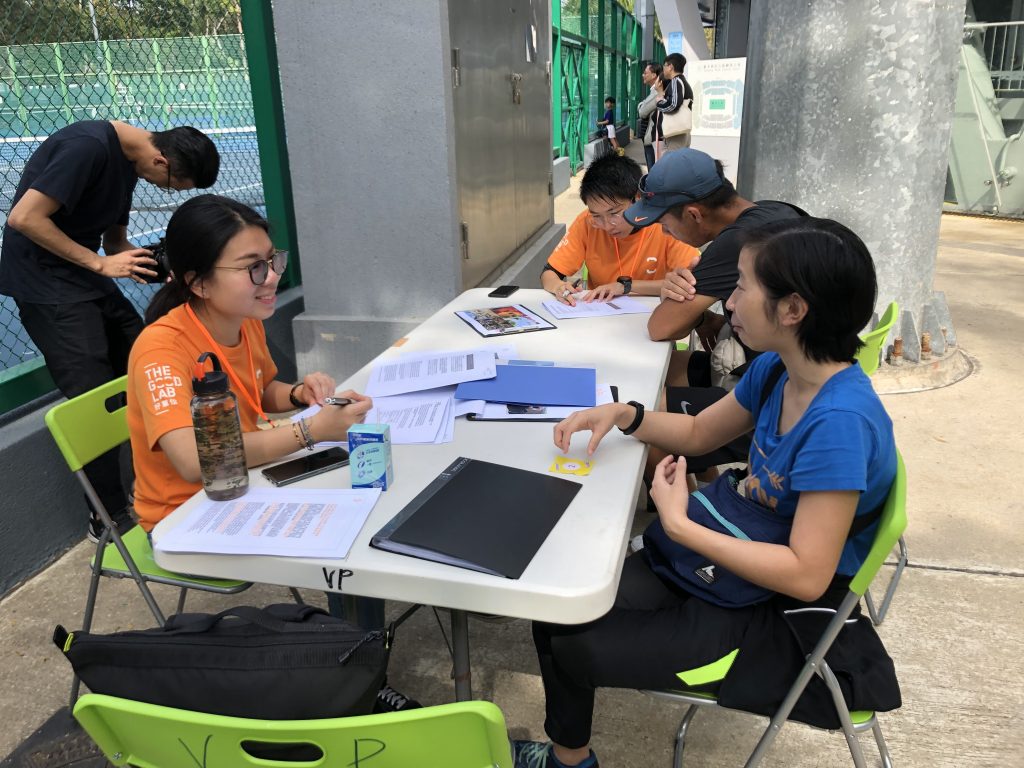
Alexa: Then in this moment of despair, the staff observer that was with us during the field visits interjected, saying that the citizens’ information and ideas had sufficient reasoning and grounds and that we really should consider it. He was a mid-ranking staff member, and he chose to support it. Just like that, that boulder got to the top of the hill and for the rest of the project started rolling down the other side of hill.
On reflection of this memory, that’s why I think it’s imperative that even as we’re consultants, the client’s team must be on the front line at almost every level. They have to be part of the fact finding for it to work.
Alexa: Sorry…. just recalled another episode. Please bear with me.
We engaged over 100+ citizens in our projects. Some keep coming back through stages of the process, even when I know they are employed full-time or are busy moms, etc. They get engaged and are deeply appreciative that we captured their ideas, built them into concepts to be considered and developed. They love being on this journey. Also, it didn’t matter if their idea got implemented, or if it evolved into something else. What was important was they were involved in the process and in the end, they continued to support the outcome as it was now a “WE idea” as a group of citizens and stakeholders and not just “ME idea”, and they know a “WE idea” is much more powerful and possible.
What I really think Design Thinking is really about this, is that every stakeholder involved is an equal contributor, everyone has some value to add, and in the end it will lead to a better outcome.
Good Lab: Has there been a change in mindset after 3 years?
Alexa: Instead of saying I’ve had a mindset change, I think what I can say now is that I have found an answer to my question of how to create sustainable change.
After being part of several design thinking consultancy projects, the most important part, which we don’t do enough of, is capacity building, so clients can continue with the process after we’re gone. Design thinking isn’t supposed to be a one-off project carried out by consultants. It should be ingrained into a habit of practice. I know we’re focusing much more on this now, less of a direct consultant, but as an advisor supporting an organisation’s team through the process of design thinking.
Good Lab: Any other insights you’d like to add from your experience?
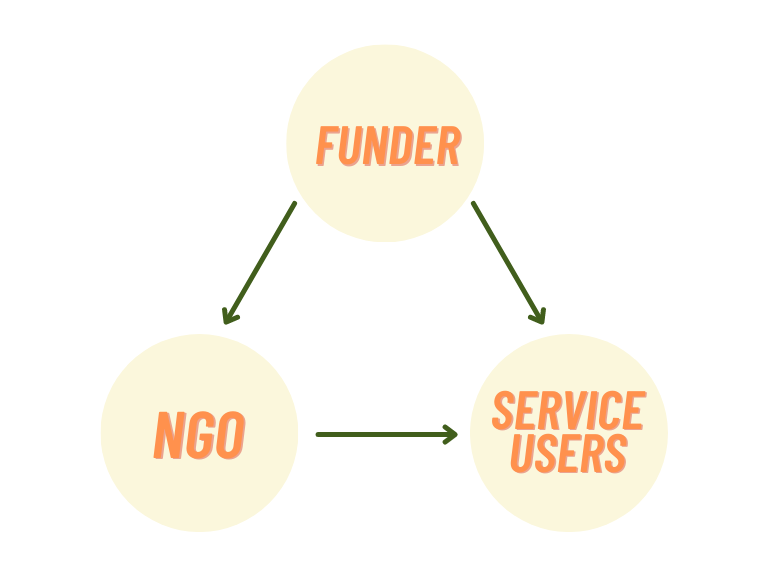
Alexa: Yes, I would like to talk more about this jargon phrase–cross-sector collaboration. Before, when I was at another NGO, I thought we were practising it but we were only doing it in a linear way. There were collaborations, but the directions of which only flowed in one way.

Alexa: Another way to do it, and what I really think Design Thinking is really about this, is that every stakeholder involved is an equal contributor, everyone has some value to add, and in the end it will lead to a better outcome. As equal partners, there is dignity there.
Alexa: I really saw this being realised with the Yan Oi Tong project, The Youth Space team kept an open mind, treated partners as equals, we worked well together, and they respected the youth as contributors on how the project was run. By adopting their suggestions, the project evolved to be much better than it was at the start, which was basically a proposal written by Good Lab and Yan Oi Tong based on assumptions and best guesses. The fact is, it never starts out as predicted, but working together over cohorts, it will get better!
Good Lab: Thanks Alexa. What do you see as the future of Design Thinking in Hong Kong?
Alexa: When I first started, we did a lot of training and knowledge building. At present, most of what Good Lab does is the execution part of design thinking. My hope is that in the future, companies and organisations will have the mindset and capacity to do this themselves, to intuitively use this approach to constantly refine services, collaborate as equals with different stakeholders and be open to others’ ideas empathetically and with curiosity.
Good Lab: Any last words before you head off into the sunset?
Alexa: You’re talking as if I’m gone for good… you know, my office now is just across the harbour on Hong Kong Island!
But more seriously, what I would say to any team or group based on what I know now, the main thing to be successful is to have your mindset ready. And then ask yourself – are you really ready? Are you ready for what could be a long journey – full of surprises, lots of time fighting against gravity, perhaps facing some truths that take time to digest, some answers that will be contradictory to many ideas that had been in your head for a long time… if you are, that’s where you will find the breakthroughs, and let the Design Thinking journey begin!
Good Lab: It’s so great to have you as part of the team these past four years, and we definitely hope we can work and collaborate together in the future! All the best in the next step of your journey!
For more information of social consulting projects that Alexa participated in, you may visit Community Space Design for Sustainable Development at Shek Wu Hui Effluent Polishing Plant and Peripheral Area and Service Design for Leisure Services Booking and Information System and Leisure Venues.






















 Hands-on Experience
Hands-on Experience 

